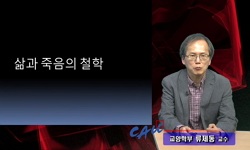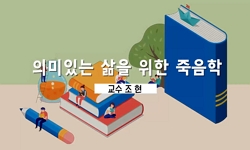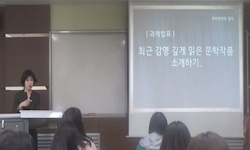이 연구는 문학 교육 목표의 하나인 한국문학과 세계문학의 보편성과 특수성을 찾기 위한 방법의 하나로, 한국 서사민요와 영미 발라드 중 ‘죽음의 노래’에 나타난 역설의 기능을 비교하...
http://chineseinput.net/에서 pinyin(병음)방식으로 중국어를 변환할 수 있습니다.
변환된 중국어를 복사하여 사용하시면 됩니다.
- 中文 을 입력하시려면 zhongwen을 입력하시고 space를누르시면됩니다.
- 北京 을 입력하시려면 beijing을 입력하시고 space를 누르시면 됩니다.

죽음의 노래에 나타난 역설의 기능과 교육적 의미 - 한국 서사민요와 영미 발라드의 비교를 통해 - = Educational Meaning and Function of Paradoxes in Songs of Death
한글로보기https://www.riss.kr/link?id=A106264938
- 저자
- 발행기관
- 학술지명
- 권호사항
-
발행연도
2014
-
작성언어
-
-
주제어
한국 서사민요 ; 영미 발라드 ; 문학 교육 ; 한국문학 ; 세계문학 ; 죽음의 노래 ; 보편성 ; 특수성 ; <애운애기 노래> ; <타박네 노래> ; Child #2 < 요정 기사 ; The Elphin Knight > ; Child #78 < 조용하지 않은 무덤 ; The Unquiet Grave > ; 역설 ; 수수께끼 ; 어머니 ; 여성 ; 삶 ; 죽음 ; Korean narrative song ; Anglo-American ballad ; Literature Education ; Korean Literature ; Foreign Literature ; Song of Death ; Universality ; Speciality ; Aeunaegi Norae ; Tabagne Norae ; Child #2 The Elphin Knight ; Child #78 The Unquiet Grave ; Paradox ; Riddle ; Mother ; Women ; Life ; Death
-
등재정보
KCI등재
-
자료형태
학술저널
-
수록면
107-130(24쪽)
-
KCI 피인용횟수
2
- DOI식별코드
- 제공처
-
0
상세조회 -
0
다운로드
부가정보
국문 초록 (Abstract)
이 연구는 문학 교육 목표의 하나인 한국문학과 세계문학의 보편성과 특수성을 찾기 위한 방법의 하나로, 한국 서사민요와 영미 발라드 중 ‘죽음의 노래’에 나타난 역설의 기능을 비교하고 교육적 의미를 살펴보았다. <애운애기 노래>와 < 요정 기사(The Elphin Knight) >, <타박네 노래>와 < 조용하지 않은 무덤(The Unquiet Grave) >을 대상으로 ‘삶과 죽음의 대결’과 ‘죽음의 수용과 성장’으로 나누어 고찰한 결과, 한국 서사민요와 영미 발라드 중 죽음의 노래는 공통적으로 죽음과 맞선 치열한 삶의 의지와 함께 죽음으로 인한 슬픔을 이겨내고 성장하는 평민 여성들의 의식을 역설을 통해 보여줌을 밝혔다. 또한 한국 서사민요에서는 주로 어머니와 아이의 관계에서 어머니로서의 정체성을, 영미 발라드에서는 주로 남녀 관계에서 연인, 아내로서의 정체성을 강하게 드러낸다는 차이점을 발견할 수 있었다. 한국 서사민요와 영미 발라드에 나타나는 이러한 공통점과 차이점은 한국문학과 세계문학의 보편성과 특수성을 교육하는 교육 자료로 적절하게 활용될 수 있다. 또한 이 글에서 살핀 노래들은 학습자들로 하여금 삶과 죽음에 대해 성찰하고, 삶을 건강하게 영위해나갈 수 있는 성숙한 인간으로 성장하게 하는 계기를 만들어준다는 점에서 문학과 삶을 다루는 대단원에서도 다루어 볼 만한 좋은 자료라 판단된다.
다국어 초록 (Multilingual Abstract)
1) the competition of life and death
The Korean narrative songs, Aeunaegi Norae and the Anglo-American ballads, Child #2 The Elphin Knight suggest paradoxes as the competition of life and death. These reveal that women don’t accept the death easily and struggle with it by the paradoxical metaphor and the impossible tasks. They show the women’s strong desire about their life as a mother in the Korean narrative songs or as a lover the Anglo-American ballads.
2) the acceptance of the death
The Korean narrative songs, Tabagne Norae and the Anglo-American ballads, Child #78 The Unquiet Grave suggest paradoxes as the acceptance of death. These reveal the impossibility of meeting between the dead people and living people by the paradoxical metaphor and the impossible tasks distinctly. They show the women’s awareness that the living people have to live without depending on their dead mother or lover. Moreover, these songs confirm that the other world and the real world are separated through paradoxes.
These songs of death could be the materials of education to teach the universality and the speciality of the Korean literature and the foreign literature. They make the students considerate the meaning of death and be the maturate people through accepting the death of others. The study of Korean narrative songs, moreover, the comparison between Korean narrative songs and Anglo-American ballads have been not performed sufficiently. I wish that this study would be the step-stone of the expansion of the comparative study of the Korean narrative songs and the Anglo-American ballads.
This paper investigated the educational meaning and the function in songs of death through the comparison of the Korean narrative songs and the Anglo-American ballads. This aims to survey the universality and the speciality of the Korean literature an...
This paper investigated the educational meaning and the function in songs of death through the comparison of the Korean narrative songs and the Anglo-American ballads. This aims to survey the universality and the speciality of the Korean literature and the foreign literature. I searched them through dividing into two categories - the competition of life and death, the acceptance of the death. The Results are as follows;
1) the competition of life and death
The Korean narrative songs, Aeunaegi Norae and the Anglo-American ballads, Child #2 The Elphin Knight suggest paradoxes as the competition of life and death. These reveal that women don’t accept the death easily and struggle with it by the paradoxical metaphor and the impossible tasks. They show the women’s strong desire about their life as a mother in the Korean narrative songs or as a lover the Anglo-American ballads.
2) the acceptance of the death
The Korean narrative songs, Tabagne Norae and the Anglo-American ballads, Child #78 The Unquiet Grave suggest paradoxes as the acceptance of death. These reveal the impossibility of meeting between the dead people and living people by the paradoxical metaphor and the impossible tasks distinctly. They show the women’s awareness that the living people have to live without depending on their dead mother or lover. Moreover, these songs confirm that the other world and the real world are separated through paradoxes.
These songs of death could be the materials of education to teach the universality and the speciality of the Korean literature and the foreign literature. They make the students considerate the meaning of death and be the maturate people through accepting the death of others. The study of Korean narrative songs, moreover, the comparison between Korean narrative songs and Anglo-American ballads have been not performed sufficiently. I wish that this study would be the step-stone of the expansion of the comparative study of the Korean narrative songs and the Anglo-American ballads.
참고문헌 (Reference)
1 "한국민요대전 (총9권)" (주)문화방송 1993
2 김태곤, "한국무가집 3" 집문당 1978
3 한국정신문화연구원 어문연구실, "한국구비문학대계(총85권)" 한국정신문화연구원 1980
4 김태곤, "한국구비문학개론" 민속원 1995
5 서영숙, "한국 서사민요의 날실과 씨실 : 우리 어머니들의 노래" 도서출판역락 2009
6 조동일, "서사민요 연구" 계명대 출판부 1979
7 서울대학교 국어교육연구소, "국어교육학 사전" 대교 1999
8 Edmunds, Susan, "The Riddle Ballad and the Riddle" 5 (5): 1986
9 Child, F. J., "The English and Scottish Popular Ballads(Five Volumes)" Dover Publications 1965
10 서영숙, "<저승차사가 데리러 온 여자> 노래의 특징과 의미 -<애운애기>, <허웅애기> 노래의 관계를 중심으로-" 한국고전여성문학회 (25) : 91-120, 2012
1 "한국민요대전 (총9권)" (주)문화방송 1993
2 김태곤, "한국무가집 3" 집문당 1978
3 한국정신문화연구원 어문연구실, "한국구비문학대계(총85권)" 한국정신문화연구원 1980
4 김태곤, "한국구비문학개론" 민속원 1995
5 서영숙, "한국 서사민요의 날실과 씨실 : 우리 어머니들의 노래" 도서출판역락 2009
6 조동일, "서사민요 연구" 계명대 출판부 1979
7 서울대학교 국어교육연구소, "국어교육학 사전" 대교 1999
8 Edmunds, Susan, "The Riddle Ballad and the Riddle" 5 (5): 1986
9 Child, F. J., "The English and Scottish Popular Ballads(Five Volumes)" Dover Publications 1965
10 서영숙, "<저승차사가 데리러 온 여자> 노래의 특징과 의미 -<애운애기>, <허웅애기> 노래의 관계를 중심으로-" 한국고전여성문학회 (25) : 91-120, 2012
11 "2009 개정시기 고등학교 국어과 교육과정"
동일학술지(권/호) 다른 논문
-
흥미 변인을 고려한 <도산십이곡(陶山十二曲)> 교육의 방향
- 한국고전문학교육학회
- 김현정 ( Kim Hyun-jeong )
- 2014
- KCI등재
-
연극적 놀이 텍스트로 읽는 <배비장전> - 고전의 재미를 찾는 방법의 한 사례 -
- 한국고전문학교육학회
- 서인석 ( Seo In-seok )
- 2014
- KCI등재
-
- 한국고전문학교육학회
- 서명희 ( Seo Myeong-hee )
- 2014
- KCI등재
-
생태학적 관점을 통한 설화교육 방안 모색 - <장자못> 전설을 중심으로 -
- 한국고전문학교육학회
- 박수진 ( Park Su-jin )
- 2014
- KCI등재
분석정보
인용정보 인용지수 설명보기
학술지 이력
| 연월일 | 이력구분 | 이력상세 | 등재구분 |
|---|---|---|---|
| 2026 | 평가예정 | 재인증평가 신청대상 (재인증) | |
| 2020-01-01 | 평가 | 등재학술지 유지 (재인증) |  |
| 2017-01-01 | 평가 | 등재학술지 유지 (계속평가) |  |
| 2013-01-01 | 평가 | 등재학술지 유지 (등재유지) |  |
| 2010-01-01 | 평가 | 등재학술지 유지 (등재유지) |  |
| 2007-01-01 | 평가 | 등재학술지 선정 (등재후보2차) |  |
| 2006-01-01 | 평가 | 등재후보 1차 PASS (등재후보1차) |  |
| 2004-07-01 | 평가 | 등재후보학술지 선정 (신규평가) |  |
학술지 인용정보
| 기준연도 | WOS-KCI 통합IF(2년) | KCIF(2년) | KCIF(3년) |
|---|---|---|---|
| 2016 | 1.33 | 1.33 | 1.2 |
| KCIF(4년) | KCIF(5년) | 중심성지수(3년) | 즉시성지수 |
| 1.05 | 0.94 | 2.362 | 0.21 |




 KCI
KCI KISS
KISS






